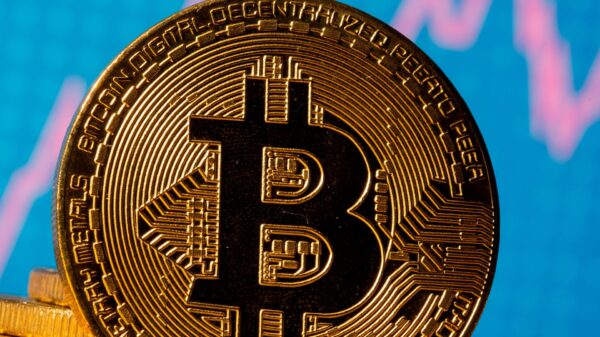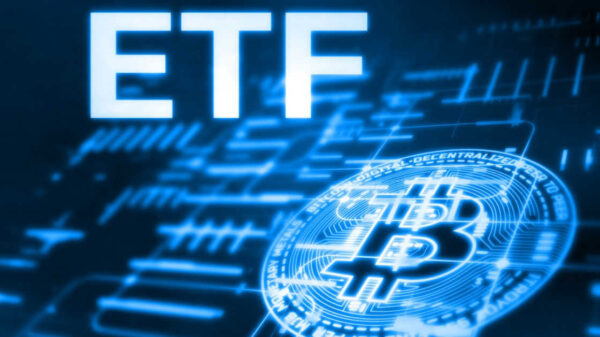Quick Take
- Michael Saylor discusses the recent decline in bitcoin prices and what it means to MicroStrategy.
- Saylor says bitcoin is misunderstood by most people and that MicroStrategy has no immediate need to sell its holdings.
Bitcoin’s near-term volatility is largely irrelevant once you understand the fundamentals of the leading cryptocurrency and how difficult it would be to create something better, according to MicroStrategy CEO Michael Saylor.
“Bitcoin is the most certain thing in a very uncertain world, it’s more certain than the other 19,000 cryptocurrencies, it’s more certain than any stock, it’s more certain than owning property anywhere in the world,” he said in an interview with appearing at CoinMarketCap’s The Capital virtual conference.
People who have spent at least $100 on bitcoin can speak about the cryptocurrency, Saylor allowed, but otherwise they probably “shouldn’t have anything to say about it.”
MicroStrategy’s bet on bitcoin
Saylor’s software company holds a massive bitcoin position — owning, including through subsidiaries, about 129,218 bitcoins — and he has become a leading proponent of the cryptocurrency since adding it to his company’s balance sheet in August 2020.
MicroStrategy’s most recent purchase, revealed in an April 5 filing, was the acquisition of 4,167 bitcoin worth about $190.5 million at the time, when bitcoin was trading at $45,714.
The company has acquired its total bitcoin holdings at an average price of $30,700. With bitcoin trading at $29,716.37 on Sunday, Saylor’s company is in the red on its purchases — although it has no plans to sell, he said.
MicroStrategy’s bet on bitcoin
Saylor’s software company holds a massive bitcoin position — owning, including through subsidiaries, about 129,218 bitcoins — and he has become a leading proponent of the cryptocurrency since adding it to his company’s balance sheet in August 2020.
MicroStrategy’s most recent purchase, revealed in an April 5 filing, was the acquisition of 4,167 bitcoin worth about $190.5 million at the time, when bitcoin was trading at $45,714.
The company has acquired its total bitcoin holdings at an average price of $30,700. With bitcoin trading at $29,716.37 on Sunday, Saylor’s company is in the red on its purchases — although it has no plans to sell, he said.
He said bitcoin would have to fall 95% before the company would consider doing anything, even then, he has said in the past, the company could post alternative collateral.
In order to fund its bitcoin bet, MicroStrategy took out three loans between December 2020 and June 2021 by issuing convertible senior notes and senior secured notes.
Convertible senior notes are debt securities that contain options to be converted into a certain amount of the issuer’s equity once they hit maturity. When they mature they must either be converted into equity, repaid in cash or a combination of both. Senior secured notes are loans that use the issuer’s assets as a form of collateral.
MicroStrategy issued senior secured notes in June 2021, secured by assets that included any bitcoin bought on or after the closing of the offering. Still, it did not include any of MicroStrategy’s existing bitcoin, or any that might be purchased with the proceeds from existing bitcoin or other holdings.
MicroStrategy and Bitcoin, a rough ride in May
In May, MicroStrategy’s share price hit a 20-month low of $159.67 before recovering to close the month at $246.65, still down from an open of $355.68. During the month, the company’s bitcoin position fell into the red, where it remains.
Bitcoin prices plunged in May, as the cryptocurrency market, as well as broader financial markets, were in tumult. After an initial crash in crypto prices early in the month, and as the wider macroeconomic environment worsened, prices plunged further amid the Terra blockchain collapse, following the failure of its stablecoin, TerraUSD (UST).
This contagion dragged bitcoin below $30,000 as it fell to its lowest levels in 18 months, since trading at about $27,000 on December 21, 2020. While many observers declared this to be clear evidence of a crypto bear market, Saylor said he is not convinced.
“I don’t know if it’s a bear market or not, but if it is a bear market, then we had three of them in the last 24 months,” he told The Block. Saylor was alluding to April 2021, when the price rose to $60,000 before falling back to about $31,000 by July 2021, then hitting all-time highs of $69,000 in November 2021.
Saylor said he prefers not to get caught up in near-term prices, adding that people focusing too much on charts are “playing with tea leaves.”
His take: “If you’re not planning to hold it for four years, you’re not really an investor at all, you’re a trader, and my advice for traders is don’t trade it, invest in it.”
TerraUSD and bitcoin as a reserve asset
One of the primary reasons bitcoin and crypto prices fell in May was the capitulation of TerraUSD and luna (LUNA), the Terra blockchain’s two main offerings.
Terra’s ecosystem came under pressure after its stablecoin, TerraUSD, lost its peg against the dollar on May 7. A shared relationship between TerraUSD and luna then dragged both down, even though TerraUSD had a “forex reserve” of more than $3 billion in bitcoin that it offloaded in a futile attempt to defend its peg.
TerraUSD had a burn mechanism involving luna so that anyone holding TerraUSD could trade one token for $1 worth of luna tokens in the event of a de-peg — if TerraUSD were trading at $0.95 for example.
This would make TerraUSD more scarce and was supposed to pull the price back toward $1, also allowing holders to take advantage of the price difference and potentially make an arbitrage profit, incentivizing them to maintain the peg.
Still, after TerraUSD lost its dollar peg on May 7, the Luna Foundation Guard (LFG) — a non-profit managing Terra’s forex reserve — used up most of its reserves to buy UST in an unsuccessful attempt to defend the peg.
Despite the collapse of TerraUSD and the depletion of its bitcoin reserves, Saylor maintained that bitcoin is a worthwhile reserve asset.
“I think it all comes down to the amount of leverage. I think it makes a lot of sense to use bitcoin as a reserve asset,” he said, noting that with reasonable leverage, such as owning $1 billion worth of bitcoin and issuing $50 million worth of a stablecoin, there would be significantly less risk involved with using bitcoin as a reserve asset.
















































